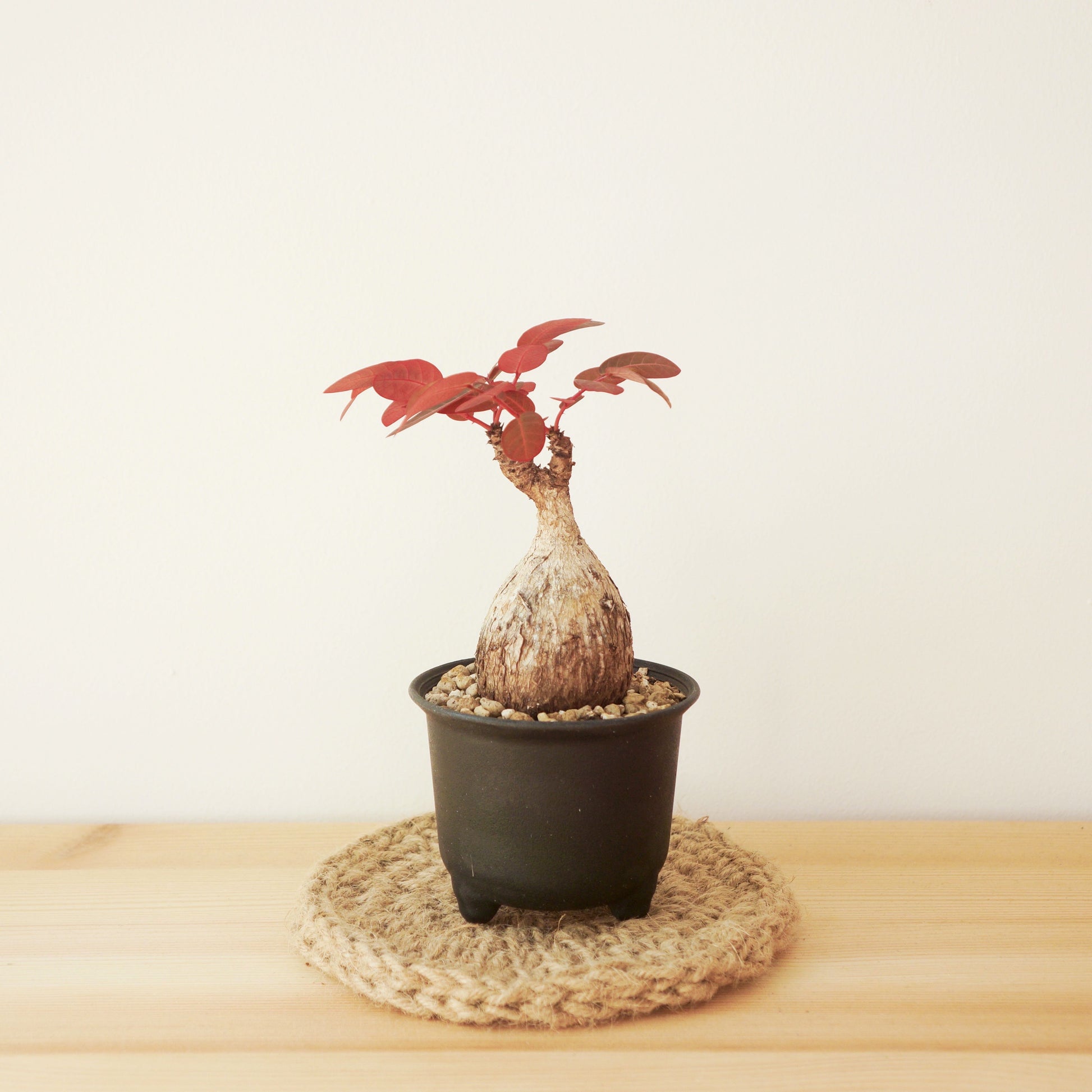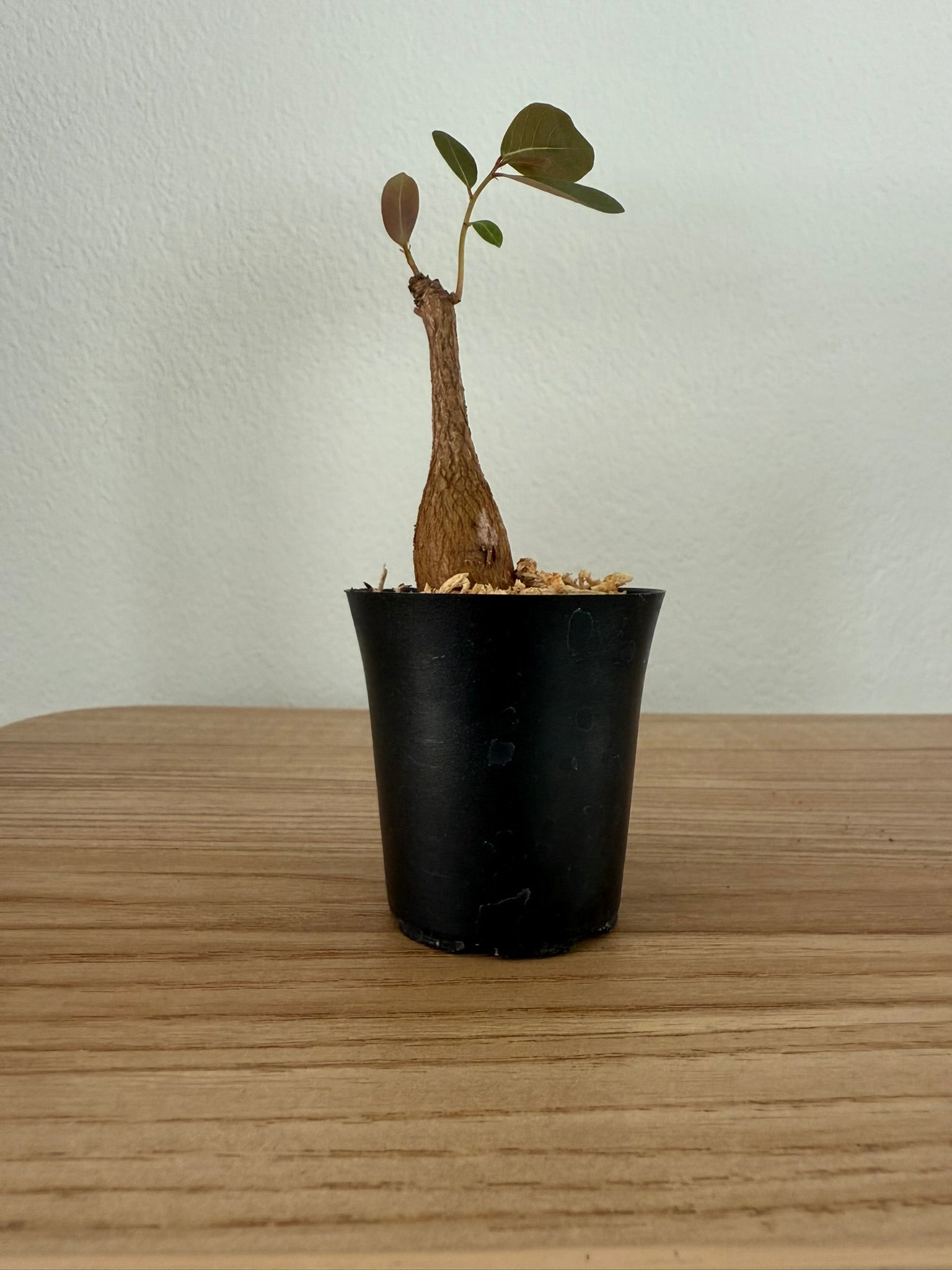Footer menu
Menu Menu
Payment methods







Phyllanthus mirabilis
1 Plant , pot size 1.5 "
Phyllanthus mirabilis (or any plant from the Phyllanthus genus) requires understanding its basic growing conditions and care needs. Here’s a general guide to help you grow this plant successfully:
Phyllanthus mirabilis thrives in tropical and subtropical climates, so it requires warm, humid conditions to grow well.
Temperature: Ideally, the plant should be kept in temperatures between 25–30°C (77–86°F). It may struggle in colder conditions.
Humidity: As a tropical plant, it prefers a humid environment, ideally around 60-80% humidity.
Soil Type: Well-drained, loamy soil with good organic matter content is ideal. It can tolerate slightly acidic to neutral soil (pH around 6.0-7.0).
Soil Moisture: The soil should be kept consistently moist, but not soggy. Overwatering can cause root rot, so ensure there’s proper drainage.
Phyllanthus mirabilis prefers partial shade to full sun. If you’re growing it indoors, a bright spot with indirect sunlight works well.
If growing outdoors, ensure the plant gets some protection from harsh midday sunlight, as it can scorch the leaves.
Regular watering is important, but as mentioned above, the soil should never become waterlogged. Allow the top few inches of soil to dry slightly before watering again.
During the hotter months, more frequent watering might be required, but always monitor for drainage to avoid standing water.
The plant benefits from occasional feeding with a balanced, water-soluble fertilizer.
Organic compost or well-rotted manure is also great for providing nutrients.
Fertilize during the growing season (spring to summer), about once a month, reducing frequency during winter when the plant’s growth slows down.
Phyllanthus mirabilis can be propagated by seeds or cuttings:
Seeds: Soak the seeds for 12–24 hours before planting to improve germination. Sow the seeds in well-drained soil and keep them moist. It may take a few weeks to germinate.
Cuttings: Take healthy, non-flowering stem cuttings (6–8 inches long), remove the lower leaves, and place them in moist soil. Keep the cutting in a warm, humid environment until roots form.
Phyllanthus mirabilis can be prone to pests like aphids, mealybugs, and scale insects.
Control: Regularly check the plant and use insecticidal soap or neem oil if pests are spotted.
Diseases like root rot can occur if the plant is overwatered or if it’s grown in poorly-draining soil.
Prune the plant periodically to maintain its shape and remove any dead or damaged leaves.
Removing spent flowers (if flowering) can encourage new growth and keep the plant tidy.
If you're growing Phyllanthus mirabilis in a pot or container, make sure it has good drainage holes to avoid waterlogging.
Use a lightweight potting mix that drains well, and choose a pot that’s at least a few inches larger than the plant’s root ball for healthy growth.
Yellowing Leaves: Could be a sign of overwatering, underwatering, or a nutrient deficiency (especially nitrogen).
Leaf Drop: May indicate the plant is stressed, possibly due to changes in temperature, humidity, or watering practices.
Slow Growth: Check if the plant is getting enough light, warmth, and nutrients. It might also need repotting if its roots have outgrown the container.
Pickup currently not available